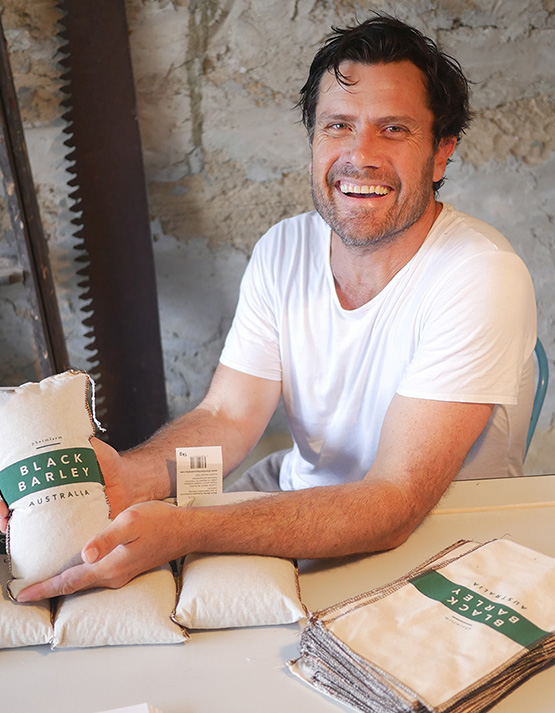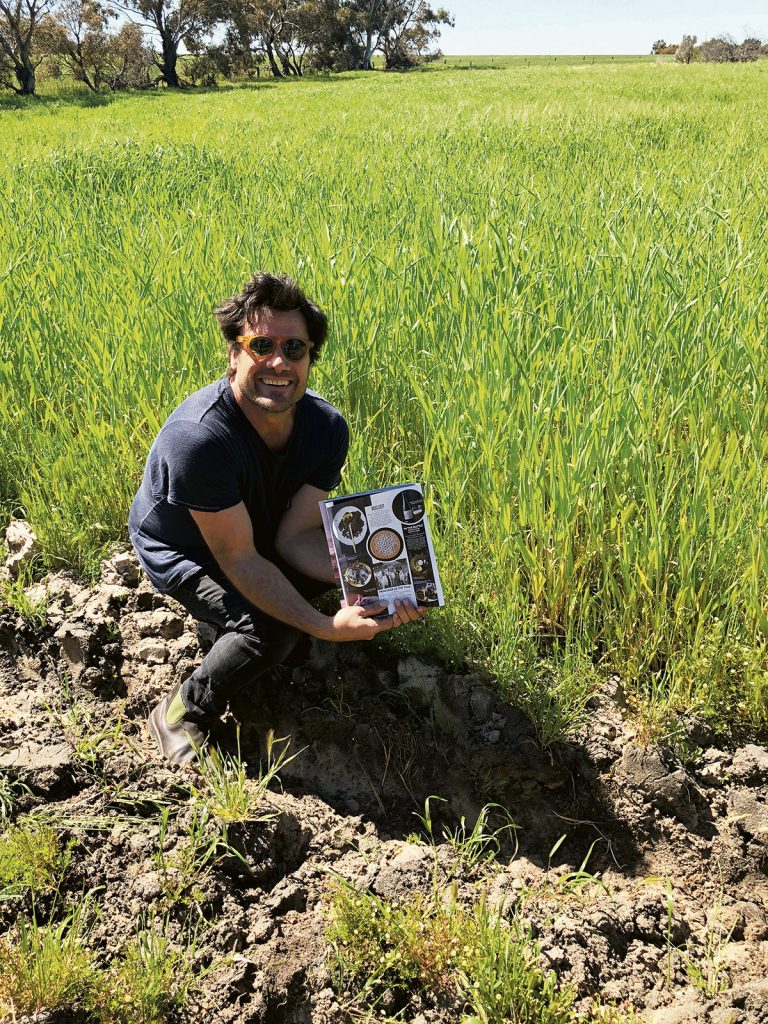Throughout the West Australian grainbelt shimmering crops of wheat, barley, canola and oats stretch as far as the eye can see – glowing liquid gold under the outback sun. Harvested with larger and larger machinery each year, these massive monocrops have dominated our agricultural landscape since the 1950’s, with Western Australian grain exports contributing around $4 billion to the state’s economy each year.
These highly homogenised grains are shipped all over the world, to be processed into noodles, cereals, finely-ground flours and thousands of baked products. They return to us in an array of brightly coloured plastic packages as biscuits, pastas, pastries and snack foods – a part of our daily food consumption since the industrial revolution.
But the consumer tide is turning. Fuelled by emerging research and diet trends like keto, paleo, low sugar and gluten free, health-conscious foodies are demanding more raw, unprocessed foods with a nutritional edge. High protein, low GI wholegrains like teff, spelt and quinoa are a much richer source of vitamins and minerals than processed wheat. Relatively unchanged since ancient times, these healthy grains are being embraced as the best thing since sliced bread.
Roger Duggan, founder of Black Barley Australia, is surfing this ancient grain wave – bringing a welcome diversity to our local food landscape with a little-known variety of barley. Beginning with only a handful of grain he procured from a seed bank in a NSW university, Roger has grown out his black barley crop to an almost commercial level, dropping this ancient grain back to into our food future.
“It’s a great alternative to other grains. It is good nutritionally and low in gluten. What I really found attractive was that it is the only grain that is eaten with its bran layer intact – it’s an added health benefit and also means it doesn’t need that extra level of processing.”
A whole grain consists of 3 main parts: the hard outer layer known as the bran, which contains fibre, minerals and antioxidants; the nutrient-rich core called the germ and the endosperm – the biggest part of the grain, which contains mostly carbohydrates and protein.
Refined grains, generally used to make fine flour, have had both the bran and germ removed, leaving just the endosperm. It’s this process which literally goes against the grain of healthy dietary recommendations.
In his first official season, Roger harvested 10 tonnes of black barley all up – enough to share his new taste sensation and concept with chefs and restaurants around the country. The product was embraced by well-known cook and writer Maggie Beer, who developed some recipes for the unusual grain. Maggie also encouraged Roger to enter the Harvey Norman delicious Awards, for which Black Barley Australia took out a gold in the “From the Earth” section in 2018. It was a fundamental step in growing awareness of the product and has sparked an ongoing interest, not just from chefs, but from brewers such as Kirin, who are keen to cultivate a black barley malt for beer, and even a Japanese miso-maker who is experimenting with a unique barley miso.
Roger called on family and friends to put in a crop of black barley on their properties, a couple of hectares at his family farm at New Norcia and more at friends’ farms in Beverly and York. “A lot of them put it in their house paddocks, which is cute,” he says. It also means its less likely to endure the broadacre spaying and monoculture methods typically used in mainstream agriculture.

Embracing regenerative farming techniques for his crop is fundamental to Roger, who is also trialling growing organically next season.
“If you’re not aware and engaging in regenerative farming now, you’re going to be left behind!” he says. His ethos around creating a sustainable and healthy product is transparent throughout the production journey – right down to presenting the barley in a tactile, screen-printed calico bag. Still working in his garage to keep the overheads of his start up down, Roger hand finishes the final production himself, weighing the barley and sewing together the final package.
Juggling his fulltime job as a marine biologist for DPIRD and his emerging business, Rodger has plans to expand to growing other healthy products under his company name Pharmfarm.
“I always loved farming, and always wanted to grow something with health benefits. It appeals to me personally, but it’s also the market trend.
It’s a trend also welcomed by the Slow Food movement, led locally by chef Vincenzo Villetri.
“This type of product really fits our Slow Food parameters of Good, Clean and Fair. It’s a healthy, delicious good quality product, which is produced using clean, regenerative farming techniques. We can buy this direct from a local producer, supporting our local economy!” he says. Vincenzo cooked a beautiful black barley risotto at the recent Taste of Chittering event, held at Nesci Estate. (you can find the recipe on page 26).
This home-grown grain has a wonderfully nutty taste and enjoyable texture, and is a wonderful way to increase diet diversity as well as supporting biodiversity in our local foodscape. You can find Black Barley locally at the Northern Valleys Locavore Store in Bindoon, or online at www.nvls.com.au.
Rodger called on family and friends to put in a crop of black barley on their properties, a couple of hectares at his family farm at New Norcia and more at friends’ farms in Beverly and York. “A lot of them put it in their house paddocks, which is cute,” he says. It also means its less likely to endure the broadacre spaying and monoculture methods typically used in mainstream agriculture.
Embracing regenerative farming techniques for his crop is fundamental to Rodger, who is also trialling growing organically next season.
“If you’re not aware and engaging in regenerative farming now, you’re going to be left behind!” he says. His ethos around creating a sustainable and healthy product is transparent throughout the production journey – right down to presenting the barley in a tactile, screen-printed calico bag. Still working in his garage to keep the overheads of his start up down, Rodger hand finishes the final production himself, weighing the barley and sewing together the final package.
Juggling his fulltime job as a marine biologist for DPIRD and his emerging business, Rodger has plans to expand to growing other healthy products under his company name Pharmfarm.
“I always loved farming, and always wanted to grow something with health benefits. It appeals to me personally, but it’s also the market trend.
This home-grown grain has a wonderfully nutty taste and enjoyable texture, and is a wonderful way to increase diet diversity as well as supporting biodiversity in our local foodscape! You can find Black Barley locally at the Northern Valleys Locavore Store in Bindoon, and a recipe on page.









